Every gardener faces pest problems from time to time. Learning how to overcome the small hazards of leaf peeling without synthetic chemical pesticides is an essential step in developing a healthy, productive garden. The best method to maintain a healthy garden is to educate yourself and learn to find common “bad bugs.” Inspect the garden regularly for early detection of problems. The sooner an insect is identified, the easier it will be to manage it in earth-friendly ways. Below are the different types of insect pests in your garden, and their control tips can be given below;
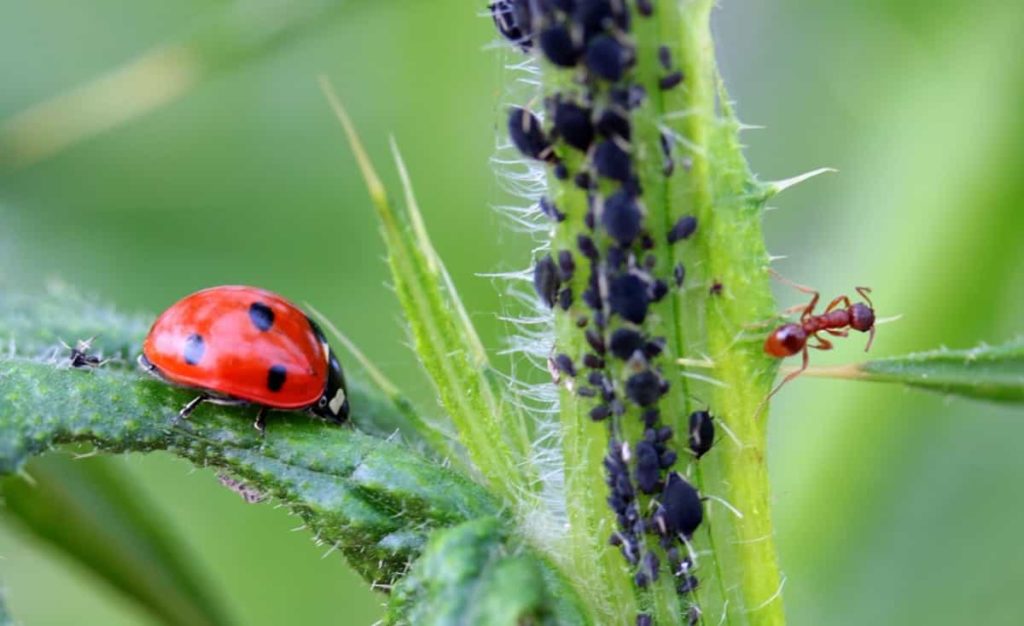
Types of insect pests in your garden
Aphids
Identification – Aphids are small, pear-shaped insects. There are both winged and non-winged aphids, depending on their species and stage of life.
Precautions: Promote beneficial predatory insects by adding small flowering plants to the garden. You can remove aphids from plants by spraying a rapid stream of water from a hose. Aphids can easily squeeze by hand or cover the plants with floating rows to protect them from pests.
Organic Control: Use horticultural oil, insecticide soap, or neem-based pesticides to eliminate challenging aphid infections. Use a natural pesticide, such as a basic insect repellent, which uses a simple soapy water solution to remove plants. If that doesn’t work, upgrade to a stronger acting neem oil. Also, encourage natural predators, such as lacewings, ladybugs, and aphids.
In case you missed it: Bottle Gourd Pests, Diseases (Lauki), Control
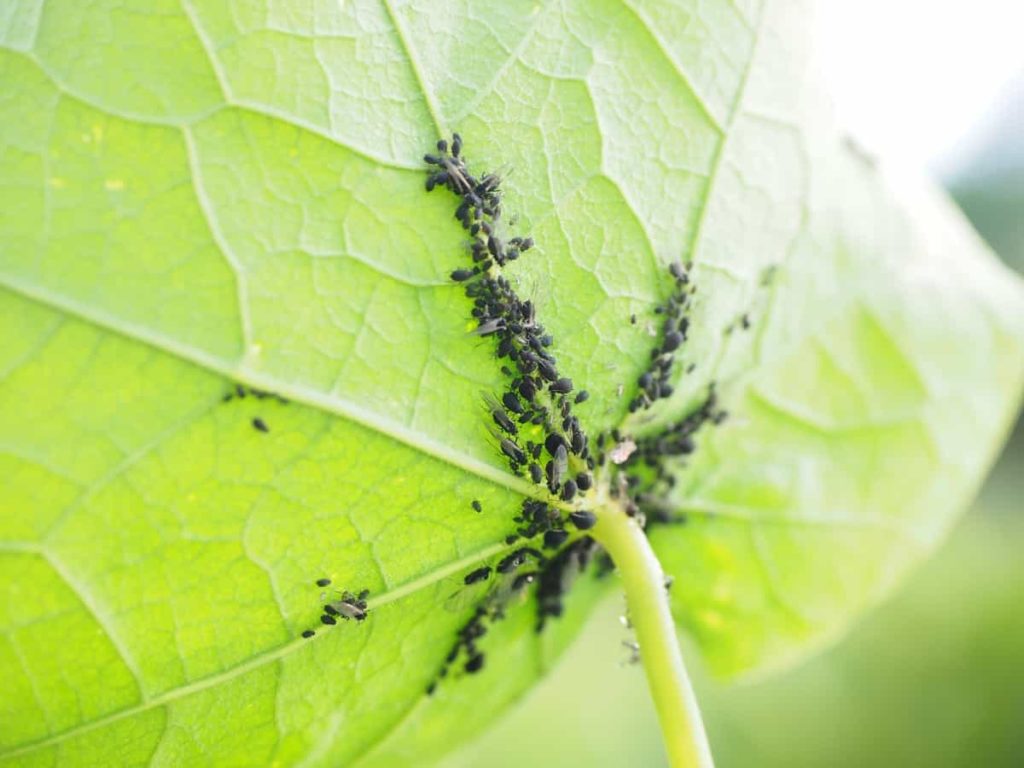
Ants
These insects are rarely plants’ past; they are beneficial insects that feed on other insects. Ants are large carpenter ants (8-15 mm long) that can cause significant damage to homes, and very few cause trouble when entering homes. Carpenter ants need to be identified, and if they are indoors, a pest control company should be hired to control them. Little annoying ants build nests outside their homes to find food.
Ant control – In the home, wash countertops and cupboards with soap and water to eliminate any food source. Place food in lightly covered containers. Rinse containers that need to be recycled. Get out and traps and bait in areas of high activity.
Asparagus beetle
Identification: Adult asparagus beetles are 1/4 long. They are black with creamy yellow spots and a red mark just behind their head. Larvae are military green, gerbil-like creatures with blackheads.
Preventive measures: Adult asparagus beetles live in the winter in the debris of the beetle garden, so cut the ferns and clean the fallen leaves in the asparagus patch in the fall.
Control: Protect emerging spears from floating row coverings and keep them in place throughout the harvest season. Find small, deep eggs on spears and hold them by the hand. Remove larvae from plants daily with a soft broom – once on the ground, spiders and beneficial insects will find and eat them. Organic Control: Neem- or spinosad-based products effectively control garden pests.
In case you missed it: Squash Plant Diseases, Pests and Control Methods
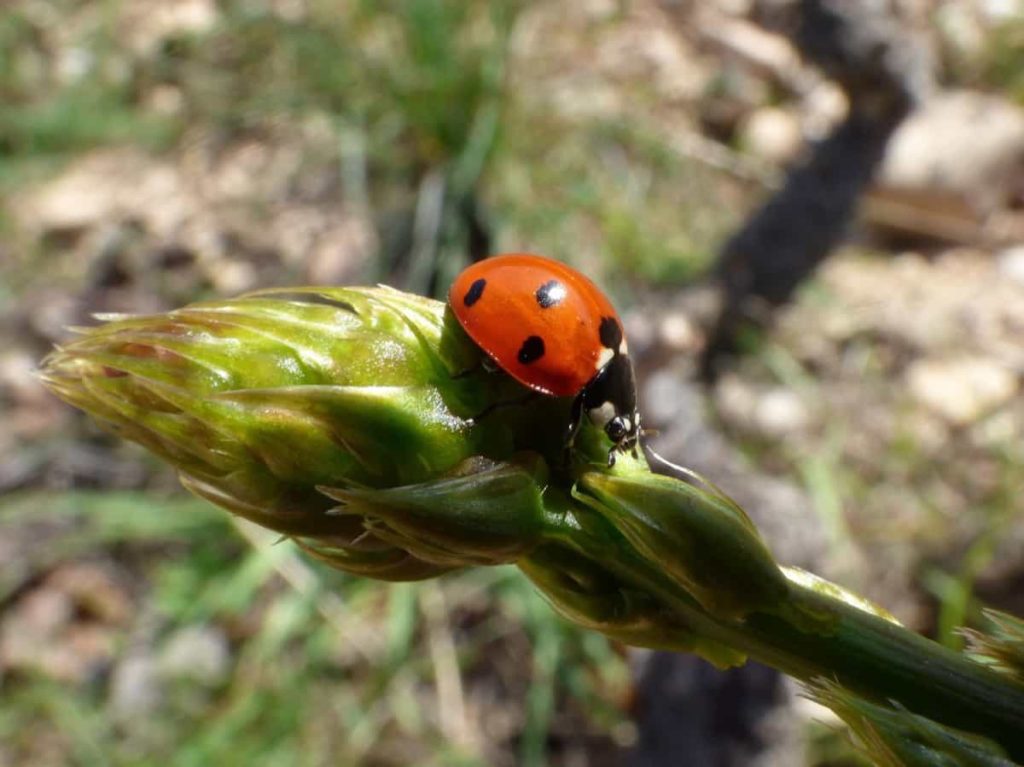
Scales
You will see mostly adult female scale insects, which look like bumps on the stems, leaves, or fruits of plants. Scale insects suck plant sap, weakening the plant and causing the plants to turn yellow and fall off. Honeydew also accumulates on leaves and fruits. It is unsightly and can promote disease.
Get rid of scales: With minor infections, remove and destroy infected plant parts or use soapy water to clean the scales from the twigs, then wash. Major infections should be treated with inert oil or summer oil spray.
Squash bugs
As the name implies, squash insects are found mostly on squash plants and pumpkins. They’re big, look like they’re wearing armor, and look like stink bugs. They suck the sap of plants and wither.
Control: At the end of the growing season, clean the affected plants and throw them in the trash (this disrupts the squash bug life cycle).
Scrape the egg cluster (found on the back of the leaf) or spray neem on egg clusters and juvenile squash worms. Because squash bugs are found early in the season, cover floating rows until pollination time is up. Insects are not the only insects in the garden.
Mealybugs
Mealybugs are common both indoors and outdoors, where they cause plants to grow, wither and turn yellow. The cotton protective cover easily identifies insects. In addition, insect repellent soap works well against insects. Mild infections on indoor plants can also be removed by dipping a toothpick or cotton swab in alcohol rubbing.
In case you missed it: Beans Pests and Diseases, Control Methods

Leaf rollers
Leaf rollers are 10 to 15 small caterpillars of different colors that eat buds, leaves, and fruits from the first signs of plant growth in spring to mid-summer. These insects are usually tree and shrub insects and are most active in April, May, and June. Some feed individually, and some in colonies. Some drooping leaves feed on the top and others on the upper or lower surface of the open leaves. Some of these bugs cause significant damage, but most are just annoying.
Leaf Roller Control – Some leaf rollers and related caterpillars live on shrubs and trees in winter. Bacillus thuringiensis (Bt) is the best control for this pest. Pyrethrins are also effective in controlling products. However, if the pests are stored inside the wrapped leaves, they can be difficult to control with any product.
Most caterpillars are adult insects. A worm whose larvae are very similar to leaf rollers is a beetroot; it is a viburnum beetle. Before spraying, check which plant the insects are eating as Bt beetle does not work on larvae. Pyrethrins will have to be used on this insect.
Slugs
Slugs are soft-bodied insects, ranging from small to 10+ cm long. Find muddy paths on leaves and soil. They take shelter in damp, dark places during the day and eat at night. They are active in temperature and humidity throughout the year, especially after rains in spring and autumn. The Surface tissues of the plant are rasped, and irregular holes are drilled in the plant, causing it to thin and disintegrate. Plants can be eaten whole, and the flowers of flowering plants can be severely damaged.
Slug control – Slugs can be hand-picked or caught in a special net. Pelleted slug baits can be kept in the garden around plants and in dark places where they take shelter. All four should be replaced every few days, especially after rain. Diatomaceous earth will also control the slugs. Slugs hate copper; copper tape can be placed around the plant base, so they are not accessible.
In case you missed it: Lady Finger Plant Diseases, Pests, Spacing (Okra/Bhindi)
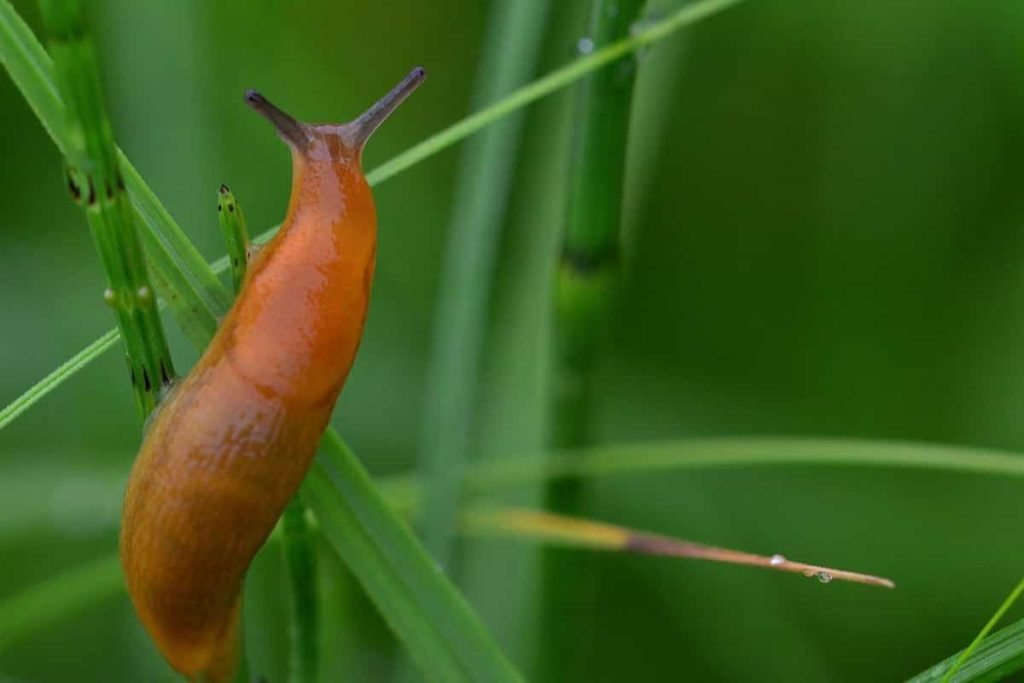
Squash vine borers
You are more likely to damage squash plants than you would see a squash vine borer. It is because these 1-inch-long white caterpillars feed inside the stems. As a result, plants wither quickly as if they were thirsty for water. Eventually, the whole bull dies. In addition to withering, find small piles of swollen stems and sawdust on the ground called ferrous (debris or insect excretion). Also, never grow these vegetables together.
Control: Crop rotation is a good practice method, as planting a few weeks later in the season and using crop cover in rows until flowering. Grow long-stemmed varieties instead of compact hybrids. As long-stemmed varieties grow, they can begin to take root in different places.
You can add soil where the stems have roots, so these secondary parts are available to support the plant if the main plant stem dies. Suppose you notice a swollen stem; carefully cut to one side and extract the borer. Place the stem on the ground and then cover it with soil to encourage roots.
Root and Vine Weevils
There are five or six weevil types, and the adults are 3 to 10 mm in length and are gray to black. They mainly attack nocturnal insects and many species of ornamental plants. Rootworm larvae or grubs eat the roots, causing them to become severely weakened or die. Adult beetles with a snout feed on the edges of the leaves at night, giving them a mark, as these insects cannot make holes in the middle of the leaf due to the type of mouth part. Larvae are found throughout the year in soil for plant crowns.
Root and vine weevil control – Place small pieces of board or cardboard between the plants; the weevils will be hidden under them and can be collected and destroyed every few days. All kinds of weevils can be collected by shaking the plants on the groundsheet at night. The best biological control is the use of parasitic nematodes. Weevils can also be controlled using pyrethrins; they should be applied in the evening for best results.
Cabbage maggot
These are adult small gray-brown flies, but the larvae are the biggest problem. Adult females lay their eggs in the roots of cabbage and other brassica plants, including broccoli, Brussels sprouts, and cabbage. The larvae then crawl into the roots of your vegetable plants, killing the plants.
Treatment: Cover young cabbage plants with row lids until after the egg-laying season (this will vary depending on where you live) so that the bees cannot reach the roots to lay their eggs. If you see bees around you, look for their eggs based on your brassica plants. Destroy any eggs you find.
Plant radishes as a trap plant near cabbage plants. When they start to die, you have to remove the radishes and destroy them. If cabbage is a permanent problem, try planting red cabbage instead of green yearly.
In case you missed it: Pests of Snake Gourd, Snake Gourd Seed Germination
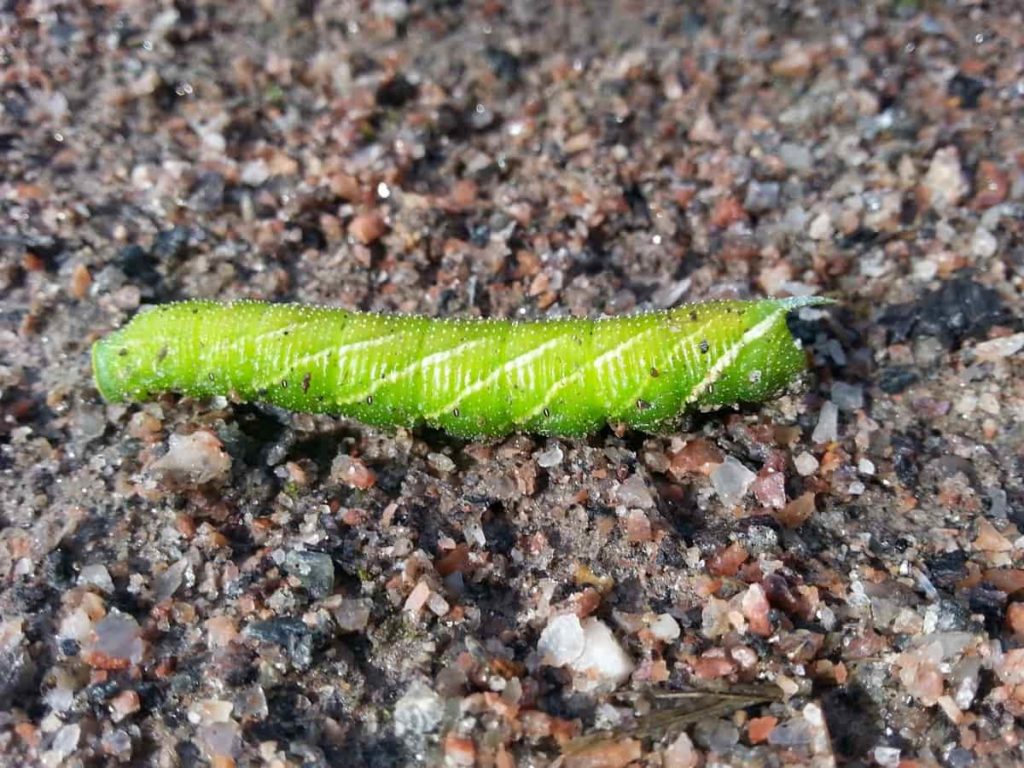
Tarnished plant bug
These are fast-moving, mottled, green or brown bugs with yellow triangles with black tips on the front. They are found in many flowers, fruits, and vegetables. Adults and nymphs suck the sap of plants, which causes the leaves and fruits to become distorted, wither, stunt, and grow nails. To control these pests:
- Keep the garden weed-free in the spring
- Apply floating row covers
- Encourage local predators.
- Spray the young nymph with neem oil
Flea beetles
Identification: Very small, black or brown beetles, fly beetles are 1/10 long. They move very fast and jump like a flea.
Control: Practice crop rotation. Place yellow sticky cards on the tops of plants to trap and trap adult fleas. Please do not use a floating line cover as it may trap newly emerged fleas under it.
Organic Control: Beneficial nematodes can help control larvae when they enter the soil. Use products based on garlic oil, neem, and spinosad for adult beetroot.
Whiteflies
Whiteflies are another type of juice-sucking insect. Small numbers are relatively harmless, but large infections can cause yellow or dry leaves to fall off plants. Like other sap-sucking insects, the sweet substance produced by whiteflies attracts ants and sooty mold. Try sticky nets and insect repellent soap or neem oil to control whiteflies.
Earwigs
Earwigs are most beneficial, but they can be harmful when they eat vegetables and other plants, including mums, clematis, and dahlias. Earwigs are easy to trap in a tuna can with a short length of garden hose or with cooking oil. Also, you can cut a small hole in the side of the cardboard box containing a small amount of oatmeal. Keep the area free of debris, as earwigs hide in cold, humid areas.
Tips for controlling insect pests in your garden
- Start with “clean” soil – Good soil can keep garden pests at bay. But preparation takes time. Firstly, until the season for organic matter, like fertilizer, begins. It will keep your soil clean by adding natural ingredients and compounds that help keep pests away. After harvesting, cover your garden with black plastic or cardboard for six months. The heat that builds up beneath it kills most garden insects and their eggs, weeds, parasites, and many other harmful microorganisms. After removing the plastic, cultivate the soil. Now you are ready to plant.
- Regularly inspect the garden – It’s not just about walking and looking. Look under the leaves, look at the stems, and observe the whole plant weekly to see if you notice any change. Some of these insects are small and too small to see with the naked eye, but you will see their work if you pay attention. Do this every week. You don’t have to inspect each plant, but at least look closely at the many plants in each vegetable.
- Keep an eye on signs of insect problems in the garden plants. Wilted leaves, dying plants, black spots, yellow tips, shriveled and mangled growth, and fruit spots are some of the symptoms of insect problems. If you see a plant with black spots, others in the group will get them soon. Remove infected plants so that they do not pass it on to others.
- Rotate crops regularly – Bugs are opportunistic and are specific to many plants. For example, if you plant beans in the same place every year, the bean-eating insects will pass through the soil in the winter and return to your plants in the spring. Plant various plants at different locations in the garden each year to prevent insects from learning and benefiting from your patterns.
- Pay attention to soil health – When the soil is healthy, so are your plants. And healthy plants are much better at successfully fighting pest infections.
- Buy Disease and Pest Resistant Seeds – It’s easier to get rid of diseases and pests once you get into your garden. Fill dead or infected leaves – cut them off when you first see signs of diseased leaves. It will prevent them from contaminating the entire plant.
- Encourage healthy soil – Healthy soil builds healthy plants with a strong immune system, better fighting diseases, and pests. Healthy soil provides food and shelter for beneficial soil life. Natural fertilizers help build healthy soil. Fish and seaweed fertilizer can stimulate soil microbes, used once a month.
- How to Grow Hibiscus from Flower
- Plantation Ideas for Home Decoration: A Beginners Guide
- Flower Garden Designs and Layouts for Beginners
- Planting and Spacing Techniques in Papaya: A Beginner’s Guide
- Growing Gold: Essential Techniques for Planting Pineapples
- How to Make Kalanchoe Plant Bushy: Home Remedies and Solutions
- 11 Reasons Why Your Gardenia is Not Blooming: Home Remedies and Solutions
- Eco Elegance: The Guide to Designing a Drought-Tolerant Landscape
- Gardening on a Slope: Strategies for Hillside Landscaping
- Nourish and Flourish: Top Organic Mulches for Thriving House Plants
- Everything You Want to Know about Indian Mogra Flower: Discover Uses and Growing
- Green Thumb Success: Expert Tips for Cultivating Greenhouse Pumpkins All Year Round
- Maximize Growth & Flavor: The Ultimate Guide to Companion Planting in Herb Gardens
- How to Control Rhododendron Problems Naturally: Home Remedies and Organic Ways to Fix Them
- Natural Magic: The Remarkable Benefits of Cinnamon for Plants
- Best Steps to Revive Dying Tulip with Natural and Organic Treatment
- 10 Reasons Why Your Angel Trumpet is Not Blooming: Remedies and Treatment
- How to Fix Periwinkle Leaf and Flower-Related Problems: Natural Remedies and Solutions
- How to Fix Zinnias Leaf and Flower Problems: Discover Natural and Home Remedies
- Organic Steps to Induce Lemon Tree Flowers: A Comprehensive Guide
- Bloom Booster: Crafting the Perfect Homemade Bougainvillea Fertilizer
- Optimizing Growth: A Guide to Applying NPK Fertilizer for Potted Plants
- 10 Best Homemade Fertilizers for Rubber Plant: DIY Recipes and Application Method
- How to Boost Female Pumpkin Flowers: Effective Steps for More Flowers and High Yields
- Transform Your Indoor Garden: Top Benefits of Pink Salt for Houseplants
- 10 Best Homemade Fertilizers for Peacock Plants (Calathea): Easy DIY Guide
- Unlock Blooms: 9 Reasons Why Your Potted Chrysanthemum is Not Blooming
- 8 Reasons Why Your Potted Hibiscus is Not Blooming: Fix it with Simple Solutions
- Unlock Blooms: 9 Key Reasons Your Potted Frangipani Won’t Flower
- 10 Reasons Why Is My Ice Plant Not Blooming: Remedies and Treatment
- 10 Reasons Why My Potted Hydrangea Not Blooming: Treatment and Remedies
- 10 Reasons Why is My Wisteria Not Blooming: Remedies and Treatment
- 10 Reasons Why is My Goldfish Plant Not Blooming: Remedies and Treatment
- Maximize Your Space: Ultimate Guide to Balcony Gardening with Grow Bags
- 10 Reasons Why Your Iris is Not Blooming: Remedies and Treatment
- 10 Reasons Why Your Anthurium Plant is Not Blooming: Treatment and Remedies